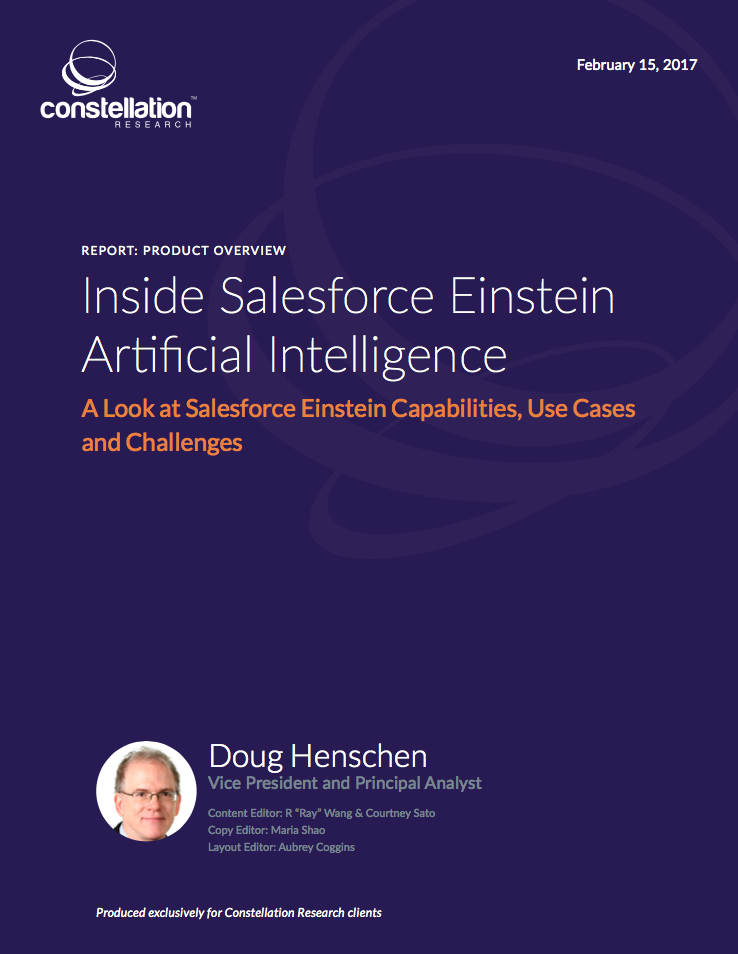 A Look at Salesforce Einstein Capabilities, Use Cases and Challenges
A Look at Salesforce Einstein Capabilities, Use Cases and Challenges
This report provides a product overview of Salesforce Einstein, which was introduced with much fanfare at the company’s October 2016 Dreamforce event. The introduction marked the company’s official entry into the world of artificial intelligence (AI), but this “beginning” was the result of more than two years of behind-the-scenes data science work and at least nine AI-related acquisitions. With a solid data-management backbone in place and a rich trove of acquired AI assets to draw on, Salesforce brought 11 Einstein features to general availability within three months of the introduction in October. Ten more Einstein features are due in February 2017 and more than 20 additional features are expected to be available before the end of the year.
Salesforce Einstein is not a “general AI” offering that attempts human-like perception, thinking and action. Rather, Einstein is an intelligence capability built into the Salesforce platform and focused on delivering smarter customer relationship management (CRM). The features are designed to discover insights, predict outcomes, recommend actions and automate tasks.
This report explains the data-management underpinnings of the Einstein platform, details the list of available and soon-to-be-released features, explores Einstein strengths and weaknesses, and analyzes planned developments on Salesforce’s roadmap. Readers should use this report to better understand Salesforce Einstein and determine whether it’s a good fit for their organization.


